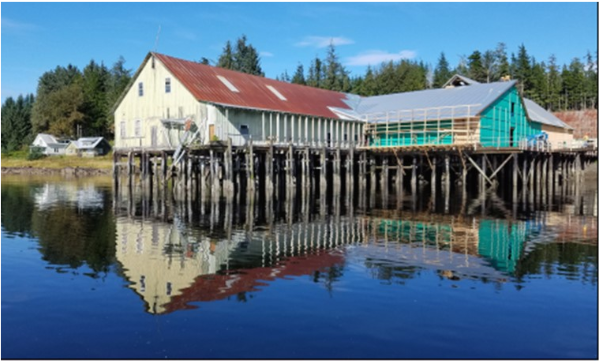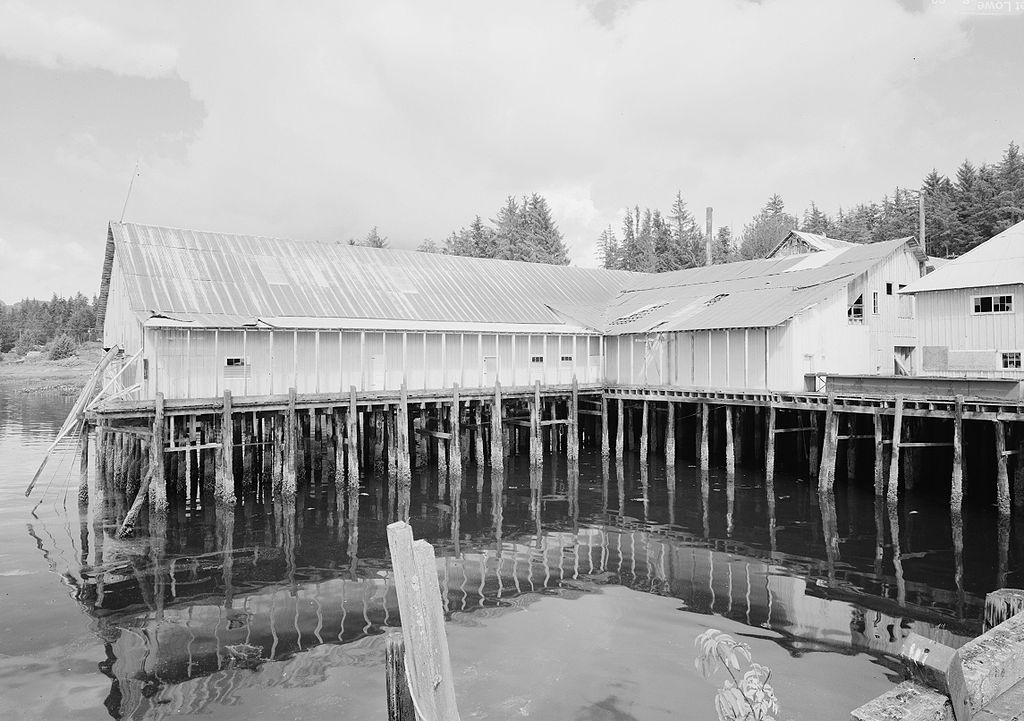
The Organized Village of Kake is working to turn its historic cannery into a tourist destination.
The tribal government already has worked to save the buildings in the complex, so the next step is to bring the buildings up to code so the community can use them.
A private company opened the cannery in 1910, which was purchased by the Kake about 40 years later.
Former Kake Executive Director Gary Williams has been working for years to get funds to preserve the cannery.
He never saw the cannery in operation, but he has heard secondhand how important it was.
“As I listen to elders over the years it seemed like everybody in Kake was somehow involved in the cannery,” Williams said. “It was like the heartbeat of the community from everything I can gather.”
People from across the world came to Kake to work in the facility before it closed in 1977.
Williams moved to Kake shortly after the closing. For the next couple of decades, the local economy chugged along, he says.
Jobs were available in logging and cold storage and the village population was large enough to support two grocery stores.
“Then in 2004, it was the first year that there wasn’t any major logging nor did the cold storage operate,” Wiliams said. “It was a double whammy for the economy and we’ve been working to build ourselves back from that ever since then.”
Throughout all these changes, the cannery was standing by.

The National Parks Service named it a National Historic Landmark in 1997 for its part in the history of labor and salmon in Alaska.
“After that, we started looking at things that could be done with it, and also of course saving it, because literally as an NHL it is a national treasure. And there’s a responsibility that comes along with that,” Williams said.
The cannery buildings were at risk of crumbling. A couple of them actually did.
About three years ago, contractors began work to stabilize the structures, paid by Kake and a grant from the Bureau of Indian Affairs.
Local workers and local timber brought the project full circle, Williams said.
“We saw people working in there that were the grandchildren or great-grandchildren of people that perhaps worked in there a hundred years ago stabilizing it,” Williams said. “Lumber going in there that was locally milled from perhaps the same stand of trees going in there, second growth of the first growth that had gone in 100 years ago.”
The community will use $1.8 million from the U.S. Department of Commerce to add plumbing, electricity, public bathrooms and a commercial kitchen, plus fire protection.
“The sprinkler system and fire system will open the door to have larger groups of people to do the tours and the dancers to perform,” Williams said. “From an economic standpoint, the vendors can have spaces to sell their artwork, their different wares and services.”
The hope is that having tours, performances and vendor space will enable Kake residents to earn income from tourism and raise the community’s profile among small tour groups.
Williams said another asset of the cannery is that it is right next to the dock used by cruise ships and other boats. It is also near the airport and ferry terminal.
The cannery project is a major piece of Kake’s Comprehensive Economic Development strategy.
Williams and others see it as a tool to bring money into the community and keep it there.
